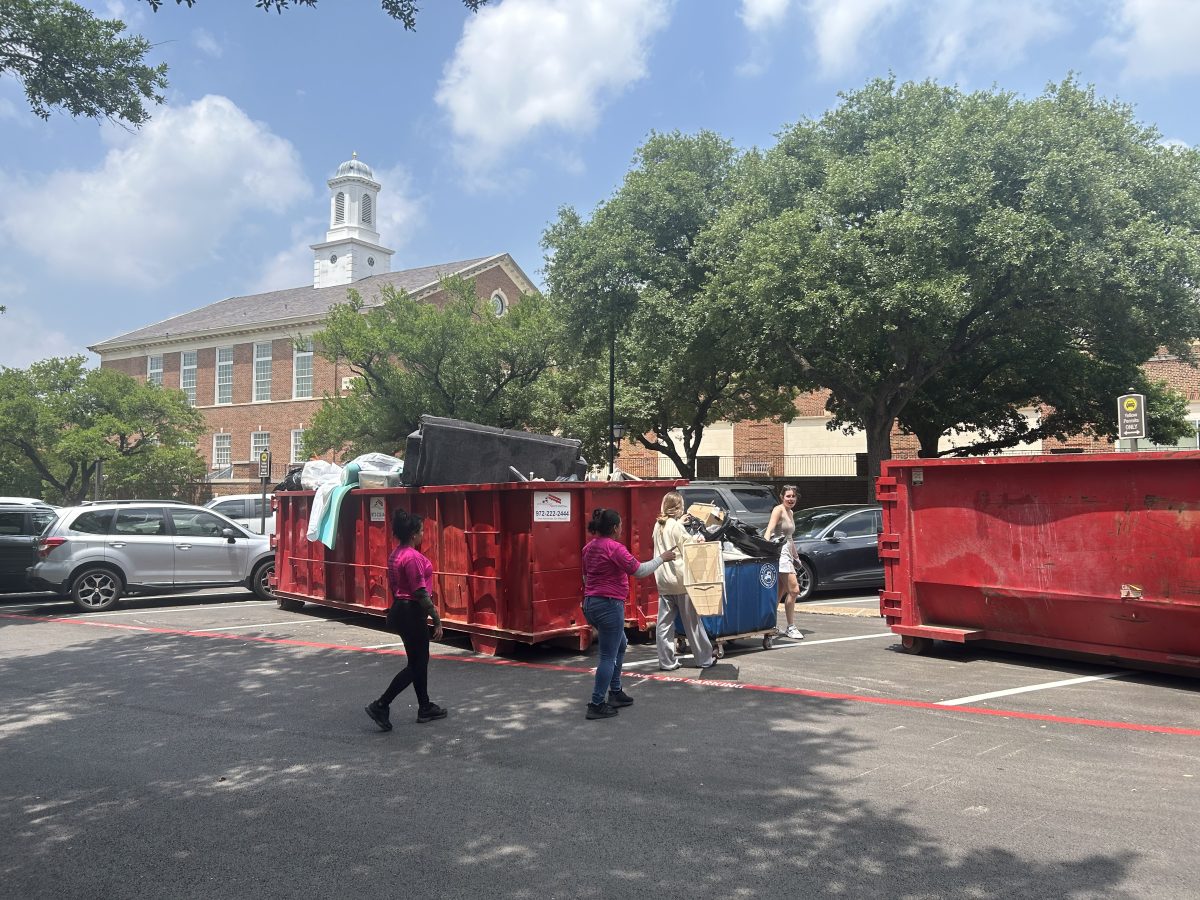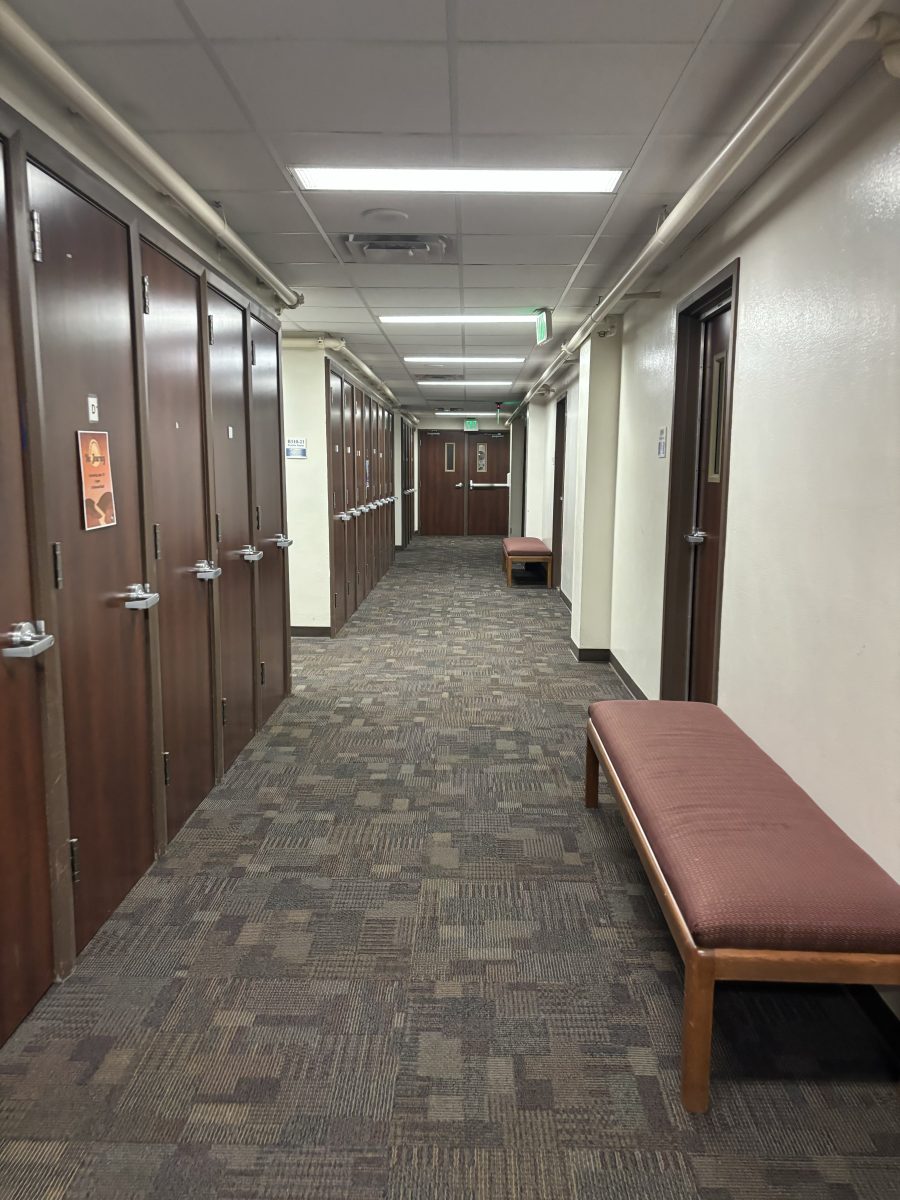SMU’s golden nest egg, its billion-dollar endowment, has lost some of its luster in a turbulent stock market and a rough economy.
Students and professors can rest assured however that the falling stock market will not take jobs or scholarships with it, at least at SMU.
Individuals and institutions alike are being batted around by a turbulent declining stock market. Off nearly 40 percent year-to-date, the stock market has caused many universities to enact budget cuts, hiring freezes, student scholarship fund reductions and outright professor layoffs.
The SMU endowment fund has declined six percent year-to-date through the month of September, SMU Treasurer Liz Williams said. This is not as bad as some private institutions such as Vassar College who has lost nearly 11 percent on their endowment, according to the New York Times. This however does not include the month of October, which had the worst monthly percentage loss, 18 percent, since the stock market crash of October 1987.
Despite an economic downturn and loss on the endowment, SMU is planning on moving ahead with its five-year capital raising campaign.
“SMU is committed to the campaign and we realize there will be ups and downs in the market, the campaign is a long term enterprise and will outlast economic cycles,” SMU Vice President of Development and External Affairs Brad Cheves said.
For the moment, published reports and interviews suggest private universities have been affected less than public universities.
Still, SMU, along with other private universities, has felt the financial pinch of a sputtering economy and tanking stock market. Many have experienced losses in endowment funds, which provide a significant portion of operating budgets.
This has forced many private universities to be less need-blind, or accepting of students regardless of financial need, than they have been in the past.
Robert Massa, vice president for enrollment and student life for Dickinson College in Pennsylvania told the New York Times that nearly 200 student applicants might have been taken last year had it not been for their financial need. He said that number could rise to as much as 250 this year.
According to SMU’s public tax forms, the university has been able to increase scholarships available to students on an average of 8.2 percent a year since 2002. This represents a net 0.7 percent increase per annum over the average tuition increase of 7.5 percent per year.
The scholarships increase however has been shrinking every year beginning with 13 percent increase in 2002, and falling to 5.5 percent increase in 2006.
Many high school students are fearful that a rough economy will mean more of a strain on their already strapped families, and could ultimately affect their school choice.
Katie Walsh, a senior at McKinney North High School, is in the midst of determining her future alma mater. She would like to attend a small private school in Texas, but is fearful her not so unique situation will prevent her from doing so.
Her father and mother are divorced and her father, recently employed in the auto industry for Ford was laid off. Katie is fearful her need based situation will cause scholarship strapped universities to overlook her application.
“It is such a shame that a little thing like my parent’s bank accounts can determine the rest of my life,” Walsh said. “I really hate the notion that I can’t afford the schools I want to go to and they don’t want to help me simply because I need help.”
The loss of endowment at many public universities has prompted decisive action to cut costs and meet budget cuts.
The New York Times recently reported that institutions such as Arizona State University, University of Florida, the University of Massachusetts and the California University system are all facing multi-million dollar budget cuts from public funding and are forced to cut professors from the payroll.
The Houston Chronicle reported that the University of Houston lost 28.5 percent on its endowment fund through the first 10 months of the year. Similarly the University of Texas lost 23 percent through the same period, and Texas A&M is down 16 percent through September.
The Chronicle reported that Moody’s Investor Service has projected that endowments will loose 30 percent on average in 2008. The Chronicle also added that Rice University, a similar private university to SMU, reports their endowment at the end of the fiscal year and was down to $4.61 billion from $4.67 billion in 2007. The SMU endowment currently stands at $1.291 billion.
Many of the universities affected have had large portions of their operating budget come from their endowment. SMU is somewhat unique with only 13-15 percent of the operating budget coming from the endowment fund in a given year, according to SMU treasurer Liz Williams.
She said that the amount of budget the endowment contributes to the operating budget is based on a formula that takes into account the market value of the endowment as well as inflation.
Vice President of Business and Finance at SMU Christine Casey said that SMU’s method of endowment spending somewhat shields the university from turbulence in the stock market. She said that they are currently in the process of formulating the budget for the 2010 fiscal year, but they did not anticipate endowment funds to be an issue.
SMU has decided to go against the grain and begin a capital raising campaign to help with the need based scholarship issue for many students. This is on the heels of universities such as Sarah Lawrence College deferring such endeavors until an upturn in the economy can make the campaign more successful, the New York Times reported.
The name of the campaign is the “Second Century Campaign” and is in light of bringing SMU into its second century of existence.
According to Cheves, the campaign has three priorities: improving student quality, academic quality and the overall campus experience, and monetary goal of $750 million.
To improve student quality the university hopes to raise $200 million for more scholarships and endowments for students both merit based and application. SMU hopes to be able to attract a better quality student through the use of this larger scholarship fund.
To improve academic quality the university plans to raise $350 million to increase professor salaries, and allow for more research grants.
Finally to improve the campus experience, SMU plans to raise the final $200 million to renovate campus facilities and implement more student leadership programs.
Cheves said that the recent launch of the campaign was only the beginning of the public phase; the university had already had $317 million pledged before the announcement of the campaign at the doorstep of Moody Coliseum on Friday, Sept. 12 and will conclude in 2013.
Cheves said that a capital raising campaign cannot be planned based on the business cycle.
“We’re very sensitive to the fact that our alumni, parents and friends have all personally been impacted by this economic retraction. Because of this we know that it will impact the timing of when many donors do decide to give,” Cheves said. “It should be pointed out however that this campaign is a five-year effort, and that even though this may not be the best time economically for some to give gifts, we expect the situation to eventually improve.”
Cheves said that even if there is a protracted downturn in the economy, he expects that the length of the campaign will out last the recession and encompass the resulting boom period in the economy as well.
As of yet it does not appear that giving has been effected as gifts to the university are up 20 percent year-to-date compared to last year, and that 2007 was a record year for giving to the university.
According to the Giving USA Foundation, a group that tracks giving to various charities and organizations, that giving to education is not always hindered by down turns in the economy. There have been 11 “recession years,” or years encompassing all or part of a recession, since 1967. Of those 11 years, giving to education has declined in only five of those years, most of which were longer, deeper recessions.
It should be noted that the U.S. is technically not in a recession at this point, as there has only been one quarter of negative growth. But according to the Giving USA Foundation data, average drop in giving in a protracted recession is 1.9 percent. In boom years that follow recessions the average giving increases at a rate of 5 percent per year.
Cheves said that another factor is that the Texas economy appears not be as affected by the downturn in the economy, and many SMU alumni living in Texas may still be able to give.
Data provided by Cheves’ office also show that in downturns when Texas is hard hit, giving still creeps in from donors. Donating to SMU from the years of 1983-1989 when the savings and loan crisis was affecting many Texas residents, giving generally trended upward throughout the decade even without a raising campaign.
In addition, giving was the highest in the 1987-1988 school year, which encompassed the stock market crash of October 1987.
“I am cautiously optimistic. We may still see some fall out from this retracted slowdown but we have a long term eye on this project and it will not effect our goals in the end,” Cheves said. “We will move forward on these goals for the students and university, they are long term goals for the betterment of the university that aren’t planned around economic cycles.”








